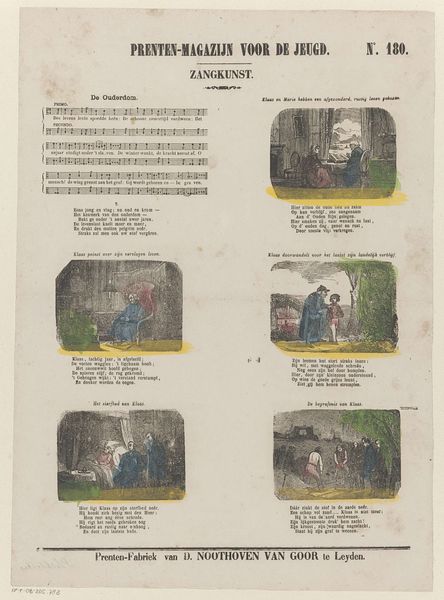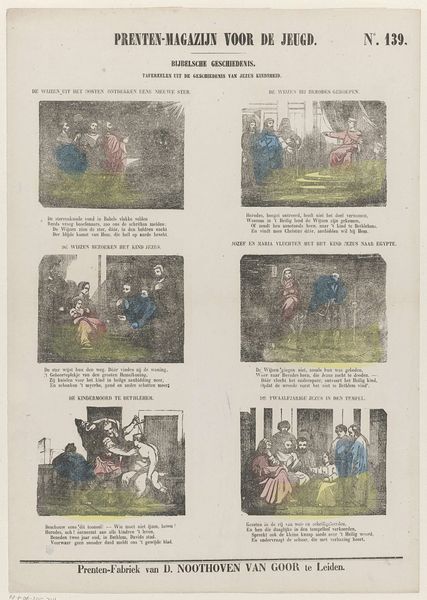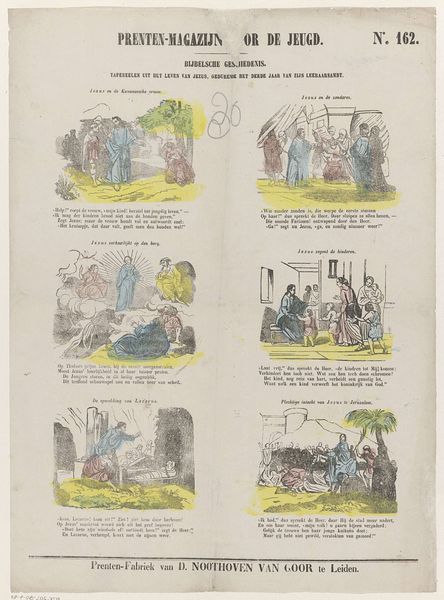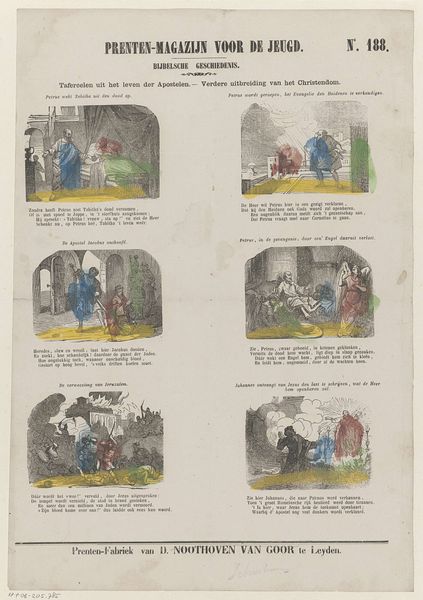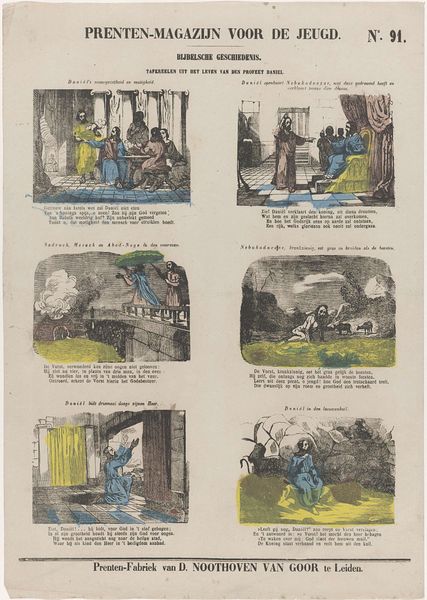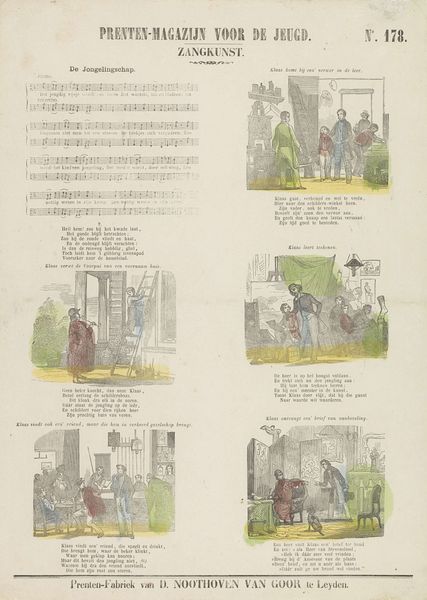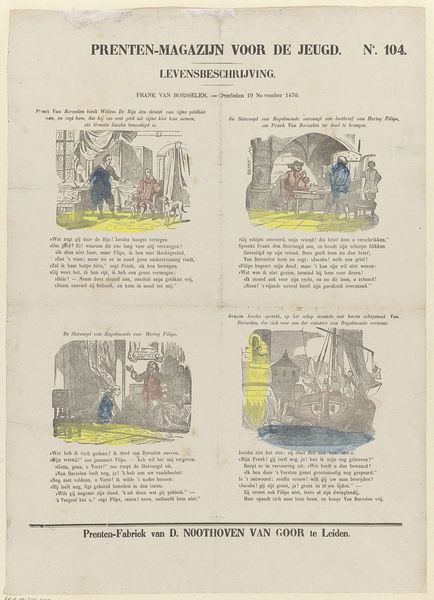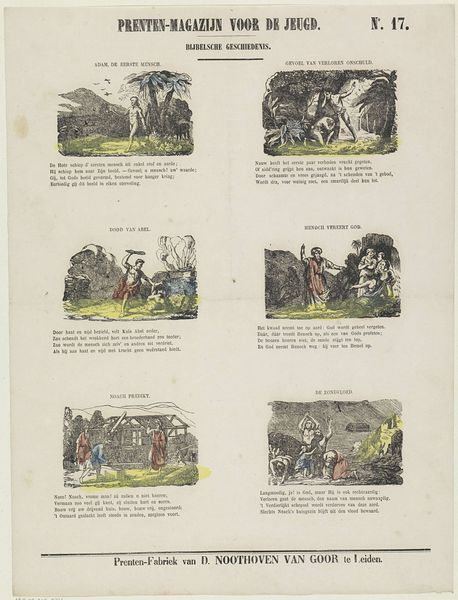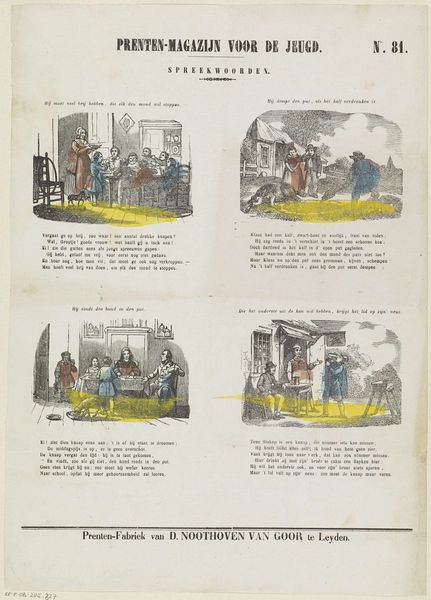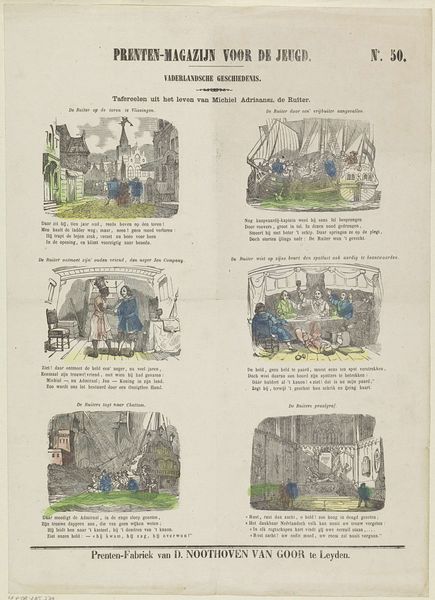
Dimensions: height 416 mm, width 305 mm
Copyright: Rijks Museum: Open Domain
Curator: Let's explore "De mannelijke leeftijd" (The Male Age), a lithograph print from somewhere between 1850 and 1881 by Dirk Noothoven van Goor. What's your initial take on it? Editor: Immediately, I’m struck by its folksy charm. There’s a domestic, almost storybook quality to the vignettes. However, they seem didactic in tone; very focused on projecting an outdated model for manhood. Curator: Indeed. What stands out to me is how van Goor uses a rather economical arrangement to guide our reading, dividing scenes into discrete yet relatable groupings on this single print, connected by lines of poetry that echo across each vignette. The arrangement becomes a statement. Editor: For me, this ordered composition speaks volumes about societal structures during that era. Each vignette, depicting daily life tasks—education, religion, and craftwork—presents rigid expectations of laboring manhood which is juxtaposed with the realities of working-class life. How can a worker measure up against these pressures to meet such diverse societal benchmarks? Curator: I see your point about expectations, and the print’s connection to a specific time period certainly informs this reading. However, I'm also interested in the formal qualities—how the artist, in confining each scene, isolates key figures and creates this enclosed space to build the overall graphic quality of the picture plane itself. We also might notice, at the bottom, the emphasis on "printing-factory," and the material conditions of producing graphic images like these at an industrial level. Editor: Agreed. I find this industrial aspect interesting in its relation to Romanticism. Considering those societal standards, there's perhaps an underlying social commentary directed at the bourgeoisie that comes into focus by understanding how printmakers such as van Goor could reflect contemporary discourse around issues such as childhood education. Curator: It's a nice tie-in between method, cultural context, and visual content. Thanks! Editor: Thank you; considering it together opens up the discussion of class and gender during a period of shifting attitudes.
Comments
No comments
Be the first to comment and join the conversation on the ultimate creative platform.
